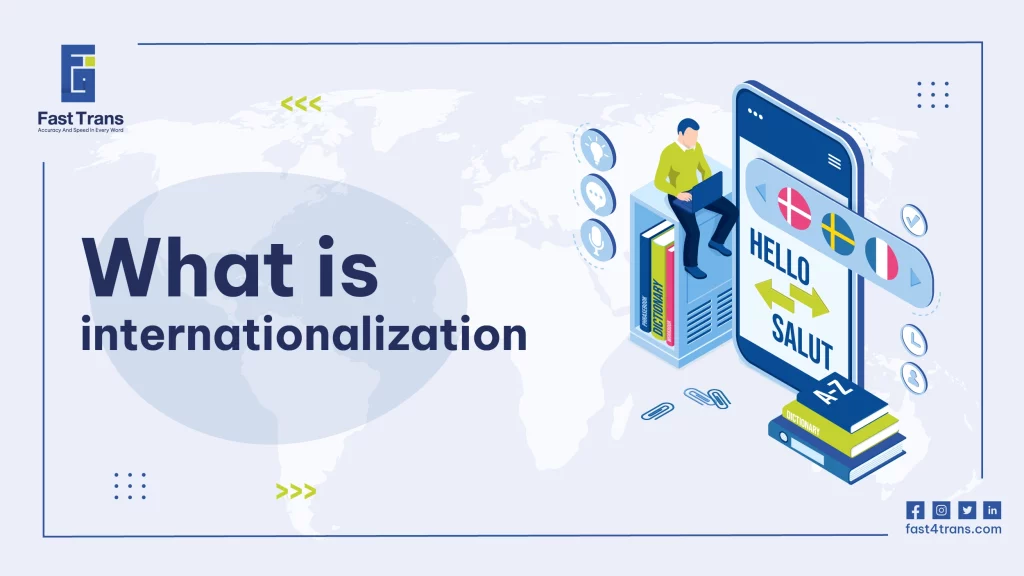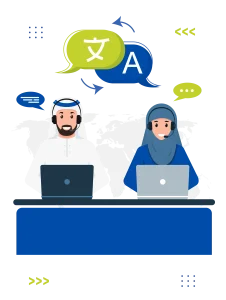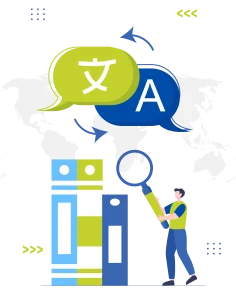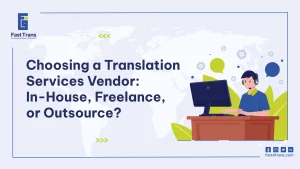We have previously covered the topic of software internationalization and found out how it’s closely linked to the success or failure of businesses.
Today we’ll dwell more on internationalization as a broader concept.
Internationalization is an interdisciplinary topic when it comes to translation because it deals with fields like marketing, advertising, UI and UX design, website building, and software development, next to translation and localization.
How so? This we shall find out below.
This article will What’s the answer questions like what internationalization is, why it is important for businesses, tips for effective internationalization, dos and don’ts, among other things.
What is internationalization (i18n)?
Symbolled as i18n, internationalization can be considered a coding tool, a process, or an approach where the end goal is to benefit brands, organizations, or businesses to grow and reach a wider audience by allowing them to be ready to function in international and multinational markets.
In other words… increasing revenue reaching more customers and saving costs.
I18n involves the development of a product or software to pave the way for easy localization (l10n).
Localization involves adapting a product to support a language or culture.
Let’s say you have a business running in Egypt and it’s going really well. You’re thinking of expansion into other countries in the Middle East. How you approach Egyptian customers won’t be the same one to attract other audiences from Arab countries.
That’s because all of them use different currencies, have different markets, and different competitors, speak different dialects, and have a totally different culture.
Therefore, the process of internationalization steps in to pave the way.
The benefits of internationalization
Although international internationalization could consume lots of resources from hiring a good marketing team to localizers, it could pay off in the end because it offers markets a multitude of new exciting opportunities.
let’s explore some of the benefits of internationalization for a business below:
- Allowing for fast growth globally, and consequently increasing revenue.
- It allows for a better user experience on your brand’s platforms (websites or applications)
- Internationalization minimizes the costs of localization later on because it solves many of the problems that could surface.
- Improve how you appear on search engines across different markets. By allowing your brand to be present to all audiences, the chance of getting acknowledged by search engines like Google increases.
- Gaining customer’s loyalty by speaking in their locale.
- Unlock opportunities for investment overseas.
- Surviving the risk of turbulent local markets by not being limited to it.
Read more about translation costs per page
How does internationalization affect developers?
Coders and software developers are the most important agents in the internationalization process.
There are several things coders look for in order to prevent the software from malfunctioning, some of them are technical, and others linguistic:
- Using Unicode character encoding and avoiding codes that are language dependent.
- Moving codes to independent resource files
- Considering different text lengths between languages.
Software interface can also be affected significantly by the factor of text expansion and contraction. It is the nature of some languages like German to expand in word count or word length while others might contract and take less space like Chinese in some cases.
- Supporting language directions like the right to left RTL languages.
Reversing text direction is not a simple matter in software coding because some text is not RTL or LTR all the way right? Inside Arabic or Hebrew RTL there could be some Latin text as well.
It does not only matter or language direction, it also involves the entire shifting of interface icons.
- Avoiding hard coding, especially for culturally dependent symbols that need to be localized like date formats, currencies, numbers, measurement symbols, and time formats.
- Using machine translation to prepopulate strings and test UI before real translations are available
Tips for successful internationalization
It’s great that you decided to save time in your localization process by paving the way with internationalization.
In order for it to run smoothly, let’s consider some tips for a fruitful internationalization:
- Start with a plan: Internationalization requires a clear strategy.
Ask questions like, how does it align with company goals? What is expected out of it?
- Educate developers: most developers now already know the certainty of internationalization. You could assist them by providing resources and sharing the overall vision of localization.
- Keep localizers in loop: since internationalization is made for the sake of localization, it’s best to keep localizers and translators involved in the process.
- Test software: Implement pseudo translation or machine translation to test the software.
In the end, the software should be ready to work globally, ensuring that all text is translatable, and functions in a user-friendly manner.
Internationalization gone wrong
What if some things got overlooked? Let’s look at the result of pitfalls in internationalization:
- Incorrect Measurement Units: some countries use inches instead of centimeters, or pounds instead of kilogram. Incorrect measurement units can be extremely confusing and could certainly ruin the user experience.
Let’s say you have an e-commerce website that sells cool printed T-shirts, you have two stores, one in the US, and one in Cairo.
The measurement description of the model who is 178 cm should be converted to 5 feet 10 inches on the US website.
- Incorrect time, date, and number formats.
The date format in the US is Month/Day/Year, while Day/Month/Year in Egypt. It’s important to optimize your e-commerce website for that small but important detail.
Moreover, the number format refers to the use of commas, or decimals between numbers.
In the US, commas are used as thousands separatos: 1,800.
While Egypt uses periods as thousands separators: 1.800.
Both numbers refer to one thousand and eight hundred.
- Unlocalized UI Controls: Some buttons are not available on the user’s keyboard because they are language dependent, which can harm the user experience.
- Incomplete Translations: Menus or important information left untranslated can frustrate users and make your site appear unprofessional.
The country drop down menu is one example of that. Some drop down menus are not translated to the user’s language which can be quite annoying when they try to select the country they’re searching for.
Some websites make the mistake of not translating the button that switches between languages.
- User Interface: Website or app design needs to be constructed to speak to different cultures. A localized application or website goes a long way.
Read more: Localizing your website: a step towards expanding your small business globally
What are the use cases for internationalization?
Let’s sum up what internationalization is used for:
- i18n is used to structure the software in a way that makes it flexible enough to allow for the translation and localization of many languages.
In our globalized world, most brands need to cater to international audiences, therefore the user interface is internationalized to cater to them.
- Internationalization i18n ensures that the UX design will support text expansion or contraction that occurs as a result of using different languages which naturally vary in word length.
- Optimizing UI to localize things like date and time formatting, currencies, and number formatting. Measurement difference, and other cultural differences.
Frequently Asked Questions
What does i18n mean?
i18n is an abbreviation for internationalization. It refers to the process of designing and developing software in a way that makes it easy to localize for different languages and regions without software engineering changes.
Why is it called i18n?
The abbreviation “i18n” is used by developers to refer to the 18 letters between the first i and the last n in the long word of ‘internationalization’.
What is an example of i18n?
You can think of travel websites like Airbnb or Booking.com that use internationalization to support several languages.
Moreover, another good example that we’re all familiar with is Facebook! That has been able over the years to suit all languages and welcome users from countries across the globe without limitations.










